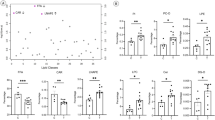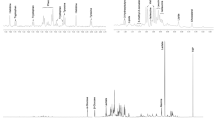Abstract
ABSTRACT: The aim of this study was to determine whether intrauterine growth retardation (IUGR) is associated with an alteration in hepatic lipid metabolism. IUGR was induced in 25 guinea pigs by uterine artery ligation on gestational d 30. On d 62, after anesthesia, an infusion of [1-14C]-palmitic acid was given. Fetuses were exposed at 15, 30, and 45 min, and simultaneous maternal and umbilical venous blood samples were taken. Livers were divided into right lobe, right and left sublobes of the quadrate lobe, and left lobe. In control fetuses, plasma radiolipids rose in parallel with, but were about half the value of, maternal levels. In IUGR fetuses, plasma radiolipids were lower than in controls at 15 and 30 min but were comparable at 45 min. Most of the radiolipid in the maternal plasma was FFA, with only 6% incorporated into triglycerides at 45 min. In control and IUGR fetal plasmas, 36–37% of the radiolipid was triglycerides by 45 min. Radiolabel incorporation into the right lobe was less than into the left lobe and left half of the quadrate lobe in control and IUGR fetuses. Compared with controls, radiolabel incorporation in IUGR fetuses was less in some or all liver lobes at each time point. The proportion of label associated with FFA and triglycerides did not vary with time, between lobes, or between control and IUGR fetuses. The difference in uptake between lobes reflects their blood supply, implying that most FFA is extracted during the first passage of the umbilical venous blood. Growth retardation was not associated with compromised hepatic FFA metabolism.
Similar content being viewed by others
Log in or create a free account to read this content
Gain free access to this article, as well as selected content from this journal and more on nature.com
or
Author information
Authors and Affiliations
Rights and permissions
About this article
Cite this article
Detmer, A., Carter, A. & Thomas, C. The Metabolism of Free Fatty Acids and Triacylglycerols by the Fetal Liver in a Guinea Pig Model of Intrauterine Growth Retardation. Pediatr Res 32, 441–446 (1992). https://doi.org/10.1203/00006450-199210000-00014
Received:
Accepted:
Issue date:
DOI: https://doi.org/10.1203/00006450-199210000-00014
This article is cited by
-
Increased Morbidity in Severe Early Intrauterine Growth Restriction
Journal of Perinatology (2004)



